This blog post was originally published in September 2010. At this moment in time, staff, pupils, parents and the wider community had been developing the school grounds for ten years.. The result was beautiful and reflects the local area and interests of those involved. Whilst many years have passed, I feel the process and practice have a timeless feel and are worthy of reposting. It serves as a reminder that school grounds have long been valued as a place of learning, play and for wildlife too. These days, biodiversity features should be the norm and not the exception…so that’s an interesting thought for all of us to consider.
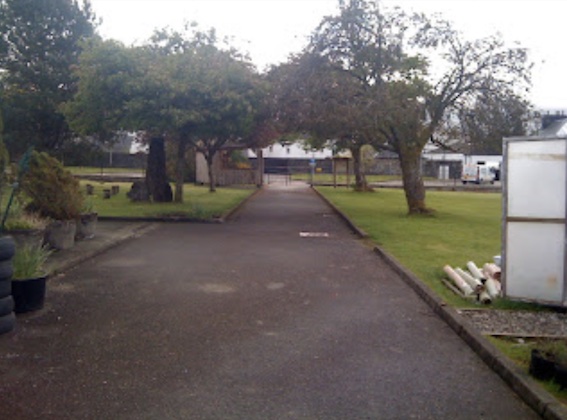
2010 was the International Year of Biodiversity. This is a great time to think about how we can increase the variety of flora and fauna in our backyards, gardens, school grounds and local areas. This can be done by considering the ecosystems or wildlife areas in the grounds and planting native plants.
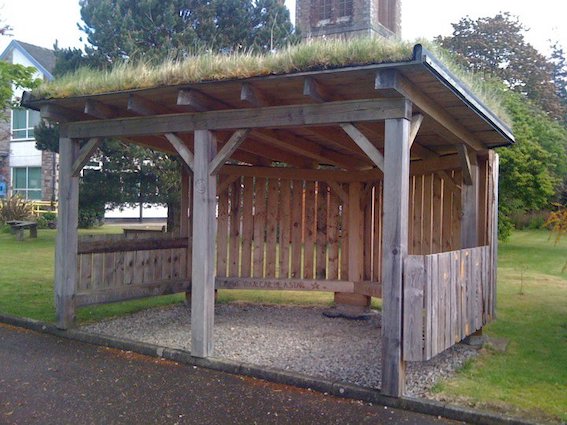
When visitors and children arrive at the school, this is the structure that is at the entrance to the school grounds. The turf roof, a theme on all outdoor shelters, is a lovely example of increasing the wildlife value of the grounds.
“We were encouraged to apply for a SUSTRANS grant and parents were keen to have a shelter near to the school gate. The P6-7 class put together the bid for funding and liaised with Eco Biz (the same local company that built the other wooden structures in our grounds) to get a design that would work. The ‘tribe’ groups that we work in for whole school activities devised the slogans that have been etched into the seating and beams to encourage not just pupils, but parents and carers to walk to school.“
Lynn Kidd, Head Teacher
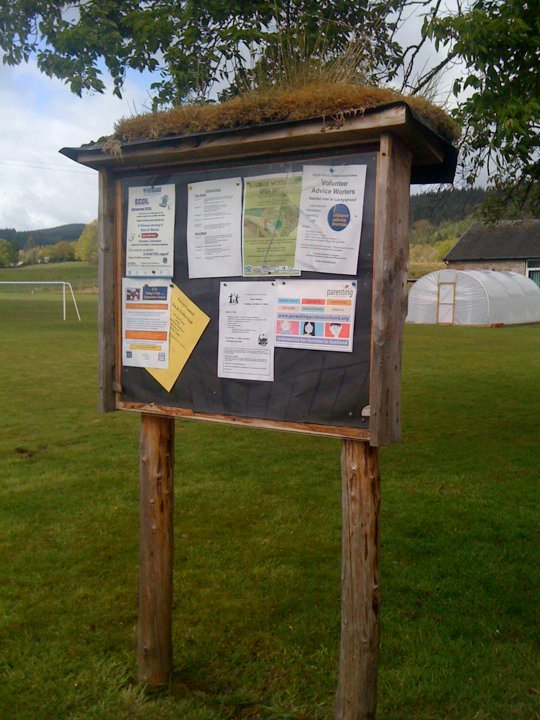
Even the noticeboard has an eco roof! It looks like a sedum roof but other low growing native plants work well too. This was paid for by the Parent Council. It cost the same as a standard one from a catalogue but is much more environmentally friendly.

A very simple measure is to talk to the landscape services and request that some grass in parts of the playing field is left to grow long. In the photo above you can see how this softens the area and helps it blend into the wider, wilder landscape around Inverarary.
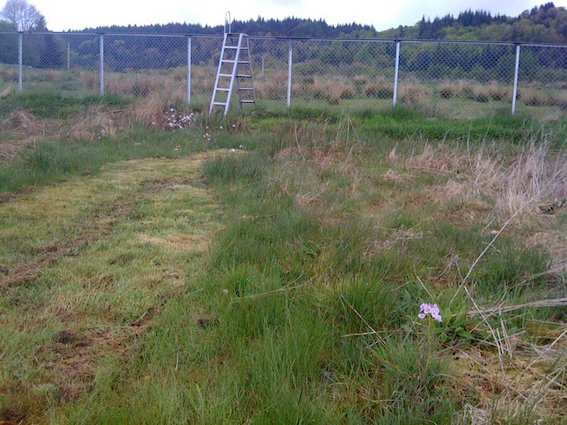
The area of long grass is boggy so this creates a unique ecosystem and is great for looking for minibeasts. Just outside the boundary is the same bogland. This creates a “wildlife corridor” between the school and the adjacent land where bugs, beasties and plants can move and settle.
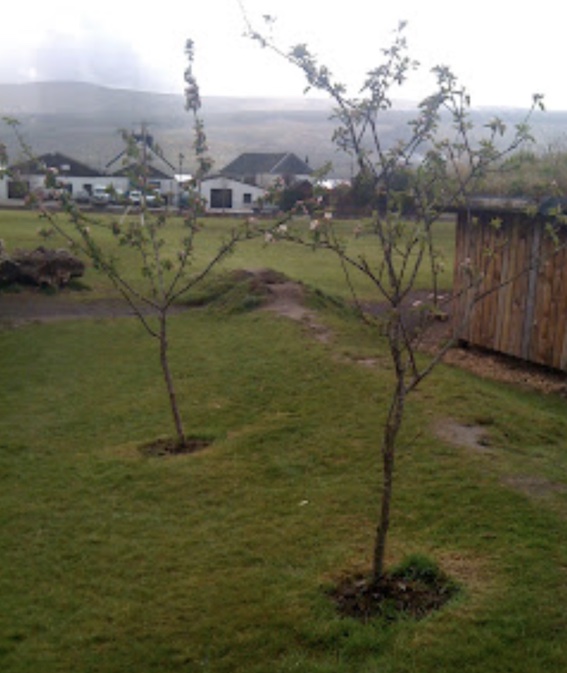
Native trees have been planted around the grounds. This provides a more diverse habitat and eventually increases the play and learning value of a school grounds.
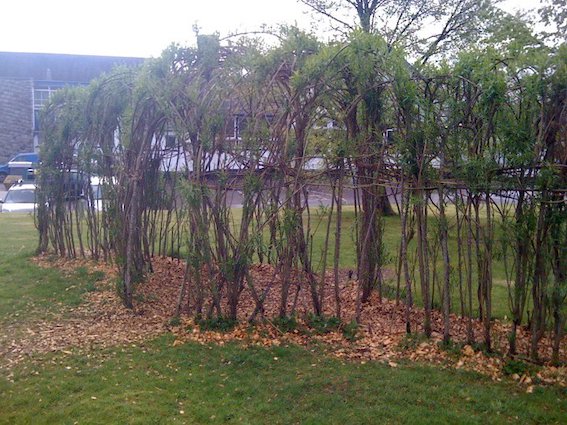
The willow tunnel is often used in children’s games such as “Willow Tag”. It is maintained by the school community. Willow is a very useful plant to have in UK schools and early years settings because of its high biodiversity value. I’ve blogged about this a lot. Below is the willow kept in water for touching up this structure.
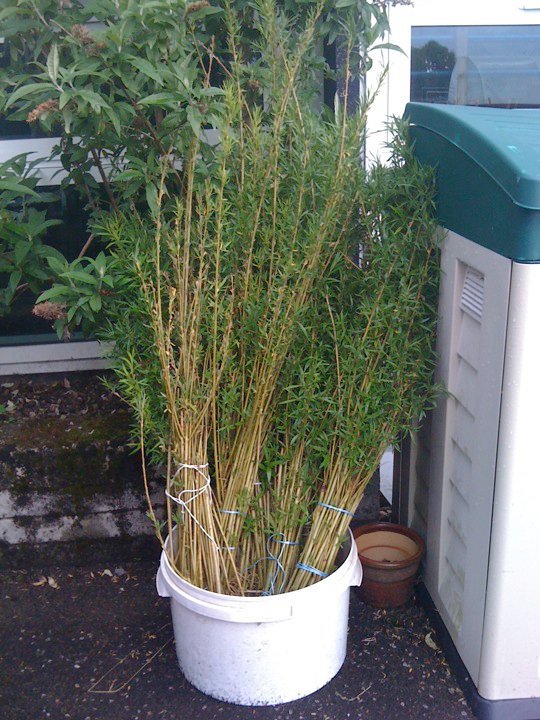
The pond was one of the first developments. The area is so wet that it didn’t need a pond liner! It required a digger to create the hole though! Native trees and wild flowers and shrubs that would attract butterflies were planted.
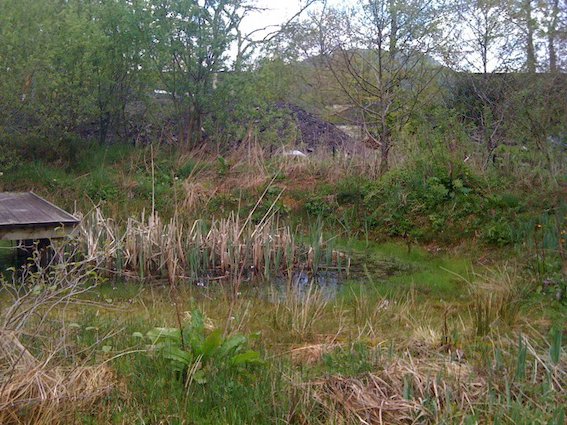
It was also wonderful to see patches of nettles growing in the grounds. This native plant is very useful and in the past we used nettles for many purposes – medicinally, in food (like nettle soup) and to make cordage. Children are resilient and usually accepting of any stings they get.
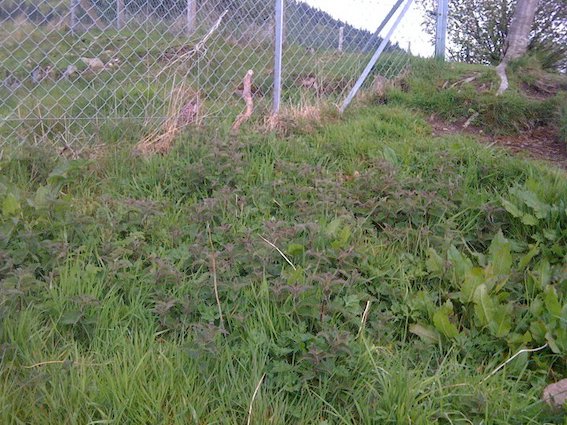
It’s always nice to be surprised when wandering around school grounds and to come across discoveries. To help children learn about native animals an artist in residence, Kirsty Aitken, worked in the school and made these mosaic sculptures with the full involvement of the children in the planning, design and creating:

Above is an adder, hiding in the heather. Below is a toad, near the pond.
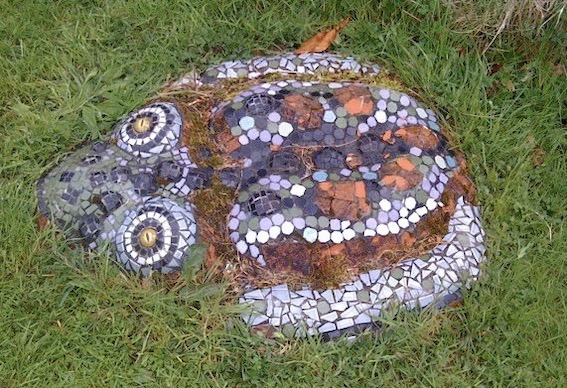
There are also tiles of different minibeasts that can be found in the grounds including on beautiful mosaic tiles. These brighten up the bike shed!
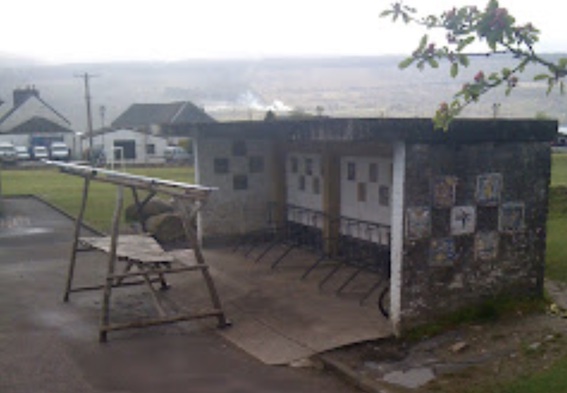
The school grounds felt bigger than what they actually were. Behind the school, the grounds were wild and beautiful. Meandering pathways have been created simply by mowing the grass. Again, this is a cheap way of adding interest and biodiversity value.
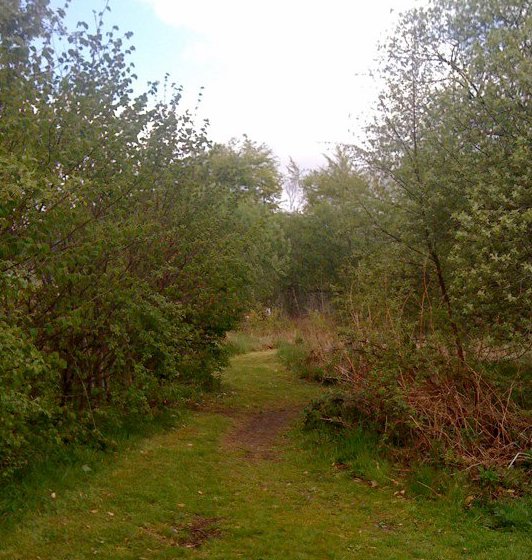
On the Creative STAR Facebook page I have posted many photos of Inveraray Primary School. Very kindly, two staff members and a former head teacher have added lots of comments which add value to the photos taken.
Over the years since writing this blog post, I’ve re-visited Inveraray Primary School many times to provide training. What has interested me is that many of these original biodiversity features and artwork have remained in place and the grounds still had a sense of wildness to them.




















Trackbacks/Pingbacks